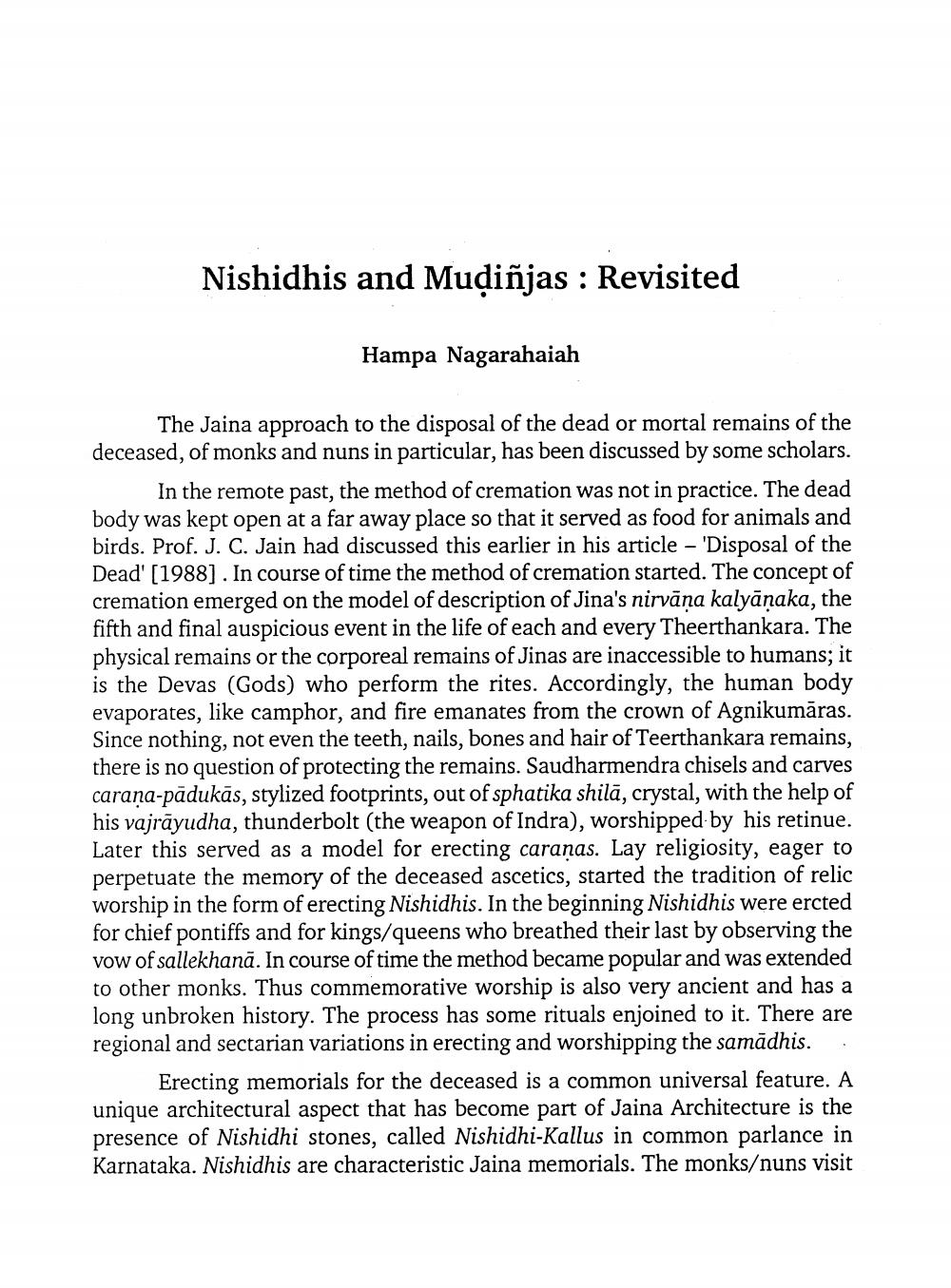________________
Nishidhis and Mudiñjas : Revisited
Hampa Nagarahaiah
The Jaina approach to the disposal of the dead or mortal remains of the deceased, of monks and nuns in particular, has been discussed by some scholars.
In the remote past, the method of cremation was not in practice. The dead body was kept open at a far away place so that it served as food for animals and birds. Prof. J. C. Jain had discussed this earlier in his article – 'Disposal of the Dead (1988). In course of time the method of cremation started. The concept of cremation emerged on the model of description of Jina's nirvāṇa kalyāņaka, the fifth and final auspicious event in the life of each and every Theerthankara. The physical remains or the corporeal remains of Jinas are inaccessible to humans; it is the Devas (Gods) who perform the rites. Accordingly, the human body evaporates, like camphor, and fire emanates from the crown of Agnikumāras. Since nothing, not even the teeth, nails, bones and hair of Teerthankara remains, there is no question of protecting the remains. Saudharmendra chisels and carves caraṇa-pădukās, stylized footprints, out of sphatika shilā, crystal, with the help of his vajrāyudha, thunderbolt (the weapon of Indra), worshipped by his retinue. Later this served as a model for erecting caranas. Lay religiosity, eager to perpetuate the memory of the deceased ascetics, started the tradition of relic worship in the form of erecting Nishidhis. In the beginning Nishidhis were ercted for chief pontiffs and for kings/queens who breathed their last by observing the vow of sallekhanā. In course of time the method became popular and was extended to other monks. Thus commemorative worship is also very ancient and has a long unbroken history. The process has some rituals enjoined to it. There are regional and sectarian variations in erecting and worshipping the samādhis..
Erecting memorials for the deceased is a common universal feature. A unique architectural aspect that has become part of Jaina Architecture is the presence of Nishidhi stones, called Nishidhi-Kallus in common parlance in Karnataka. Nishidhis are characteristic Jaina memorials. The monks/nuns visit




